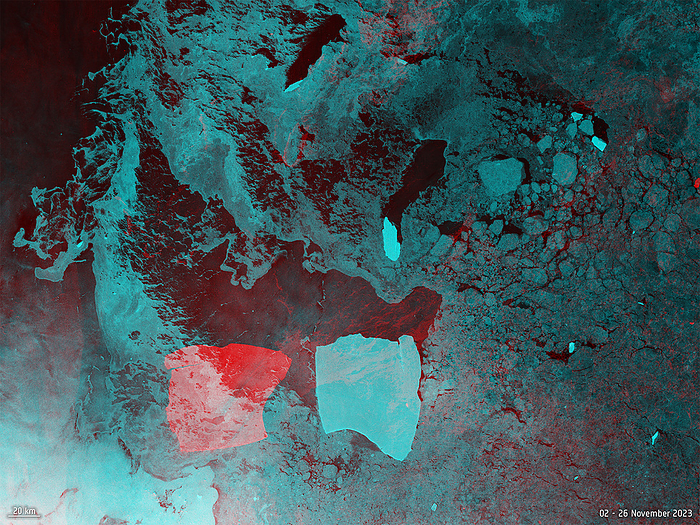
RM
A23a iceberg shifting, satellite image
Satellite image showing the movement of the largest iceberg in the world, known as A23a, between 2 November 2023 (blue) and 26 November 2023 (red). The iceberg was formed when it calved from the Filchner-Ronne ice shelf in West Antarctica in 1986. By 2020, it had lost its grip on the seafloor and had started drifting in the Weddell Sea. Now, due to winds and currents, A23a is moving away from Antarctic waters and is expected to end up in the South Atlantic, specifically in an area called Iceberg Alley. The iceberg measures 4000 square kilometres, which is more than four times the size of New York City, and it is approximately 400 metres thick. Image data obtained by the Copernicus Sentinel-1 satellite., by EUROPEAN SPACE AGENCY/SCIENCE PHOTO LIBRARY

More
Top Categories
